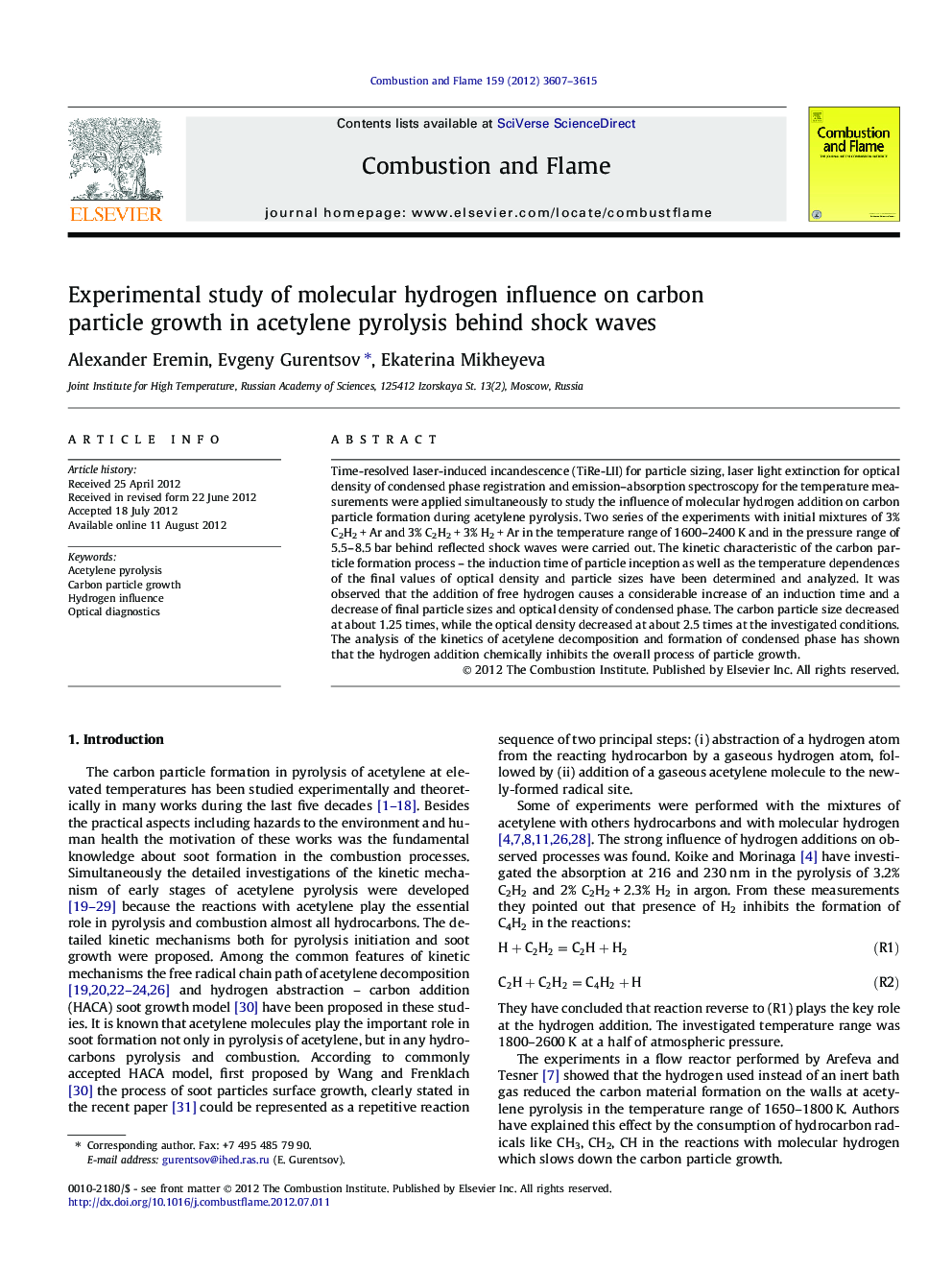| Article ID | Journal | Published Year | Pages | File Type |
|---|---|---|---|---|
| 169332 | Combustion and Flame | 2012 | 9 Pages |
Time-resolved laser-induced incandescence (TiRe-LII) for particle sizing, laser light extinction for optical density of condensed phase registration and emission–absorption spectroscopy for the temperature measurements were applied simultaneously to study the influence of molecular hydrogen addition on carbon particle formation during acetylene pyrolysis. Two series of the experiments with initial mixtures of 3% C2H2 + Ar and 3% C2H2 + 3% H2 + Ar in the temperature range of 1600–2400 K and in the pressure range of 5.5–8.5 bar behind reflected shock waves were carried out. The kinetic characteristic of the carbon particle formation process – the induction time of particle inception as well as the temperature dependences of the final values of optical density and particle sizes have been determined and analyzed. It was observed that the addition of free hydrogen causes a considerable increase of an induction time and a decrease of final particle sizes and optical density of condensed phase. The carbon particle size decreased at about 1.25 times, while the optical density decreased at about 2.5 times at the investigated conditions. The analysis of the kinetics of acetylene decomposition and formation of condensed phase has shown that the hydrogen addition chemically inhibits the overall process of particle growth.
